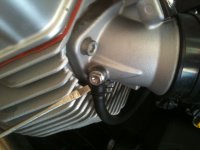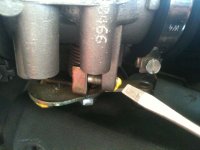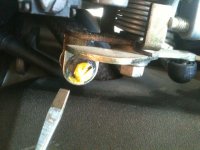- Joined
- Nov 7, 2008
- Messages
- 33
I've synced carbs on four cylinder in-line bikes before using the basic Motion Pro Mecury based carb synchronizer. I see where the vaccum hoses attach to the the two throttle bodies but I am not clear on where an adjustment is made to bring the two into sync. I've found posts that mention the air-bleeds screws being closed or opened and then to sync the throttle bodies . . .
But I'm not clear on where the adjustments are made, how they are made or how much they are made. This is my first bike with fuel injection and with just two carbs
Bill Buchanan
97 Griso 1100
But I'm not clear on where the adjustments are made, how they are made or how much they are made. This is my first bike with fuel injection and with just two carbs
Bill Buchanan
97 Griso 1100



